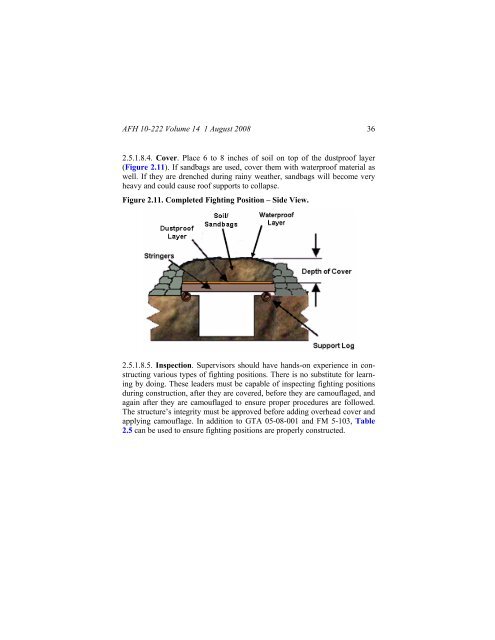Civil engineer guide to fighting positions, shelters, obstacles
Civil engineer guide to fighting positions, shelters, obstacles
Civil engineer guide to fighting positions, shelters, obstacles
Create successful ePaper yourself
Turn your PDF publications into a flip-book with our unique Google optimized e-Paper software.
AFH 10-222 Volume 14 1 August 2008 36<br />
2.5.1.8.4. Cover. Place 6 <strong>to</strong> 8 inches of soil on <strong>to</strong>p of the dustproof layer<br />
(Figure 2.11). If sandbags are used, cover them with waterproof material as<br />
well. If they are drenched during rainy weather, sandbags will become very<br />
heavy and could cause roof supports <strong>to</strong> collapse.<br />
Figure 2.11. Completed Fighting Position – Side View.<br />
2.5.1.8.5. Inspection. Supervisors should have hands-on experience in constructing<br />
various types of <strong>fighting</strong> <strong>positions</strong>. There is no substitute for learning<br />
by doing. These leaders must be capable of inspecting <strong>fighting</strong> <strong>positions</strong><br />
during construction, after they are covered, before they are camouflaged, and<br />
again after they are camouflaged <strong>to</strong> ensure proper procedures are followed.<br />
The structure’s integrity must be approved before adding overhead cover and<br />
applying camouflage. In addition <strong>to</strong> GTA 05-08-001 and FM 5-103, Table<br />
2.5 can be used <strong>to</strong> ensure <strong>fighting</strong> <strong>positions</strong> are properly constructed.
















